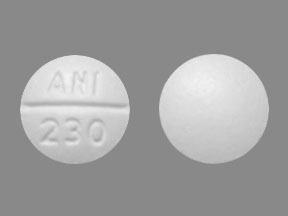Propafenone Interactions
There are 429 drugs known to interact with propafenone, along with 7 disease interactions, and 1 alcohol/food interaction. Of the total drug interactions, 83 are major, 327 are moderate, and 19 are minor.
- View all 429 medications that may interact with propafenone
- View propafenone alcohol/food interactions (1)
- View propafenone disease interactions (7)
Most frequently checked interactions
View interaction reports for propafenone and the medicines listed below.
- Aspir 81 (aspirin)
- Aspirin Low Strength (aspirin)
- Benadryl (diphenhydramine)
- CoQ10 (ubiquinone)
- Crestor (rosuvastatin)
- Diltiazem Hydrochloride CD (diltiazem)
- Eliquis (apixaban)
- Fish Oil (omega-3 polyunsaturated fatty acids)
- Flonase (fluticasone nasal)
- Iron Sulfate (ferrous sulfate)
- Lasix (furosemide)
- Lipitor (atorvastatin)
- Lyrica (pregabalin)
- Metoprolol Succinate ER (metoprolol)
- Metoprolol Tartrate (metoprolol)
- MiraLAX (polyethylene glycol 3350)
- Nexium (esomeprazole)
- Norco (acetaminophen / hydrocodone)
- Plavix (clopidogrel)
- Pradaxa (dabigatran)
- Synthroid (levothyroxine)
- Tylenol (acetaminophen)
- Tylenol Extra Strength (acetaminophen)
- Vitamin B12 (cyanocobalamin)
- Vitamin C (ascorbic acid)
- Vitamin D2 (ergocalciferol)
- Vitamin D3 (cholecalciferol)
- Xanax (alprazolam)
- Xarelto (rivaroxaban)
- Zyrtec (cetirizine)
Propafenone alcohol/food interactions
There is 1 alcohol/food interaction with propafenone.
Propafenone disease interactions
There are 7 disease interactions with propafenone which include:
- bronchospastic disorder
- cardiac dysfunction
- AV node dysfunction
- electrolyte imbalance
- (+) ANA titer
- liver disease
- renal dysfunction
More about propafenone
- propafenone consumer information
- Compare alternatives
- Pricing & coupons
- Reviews (71)
- Drug images
- Side effects
- Dosage information
- During pregnancy
- Drug class: group I antiarrhythmics
- Breastfeeding
- En español
Related treatment guides
Drug Interaction Classification
| Highly clinically significant. Avoid combinations; the risk of the interaction outweighs the benefit. | |
| Moderately clinically significant. Usually avoid combinations; use it only under special circumstances. | |
| Minimally clinically significant. Minimize risk; assess risk and consider an alternative drug, take steps to circumvent the interaction risk and/or institute a monitoring plan. | |
| No interaction information available. |
See also:
Further information
Always consult your healthcare provider to ensure the information displayed on this page applies to your personal circumstances.


